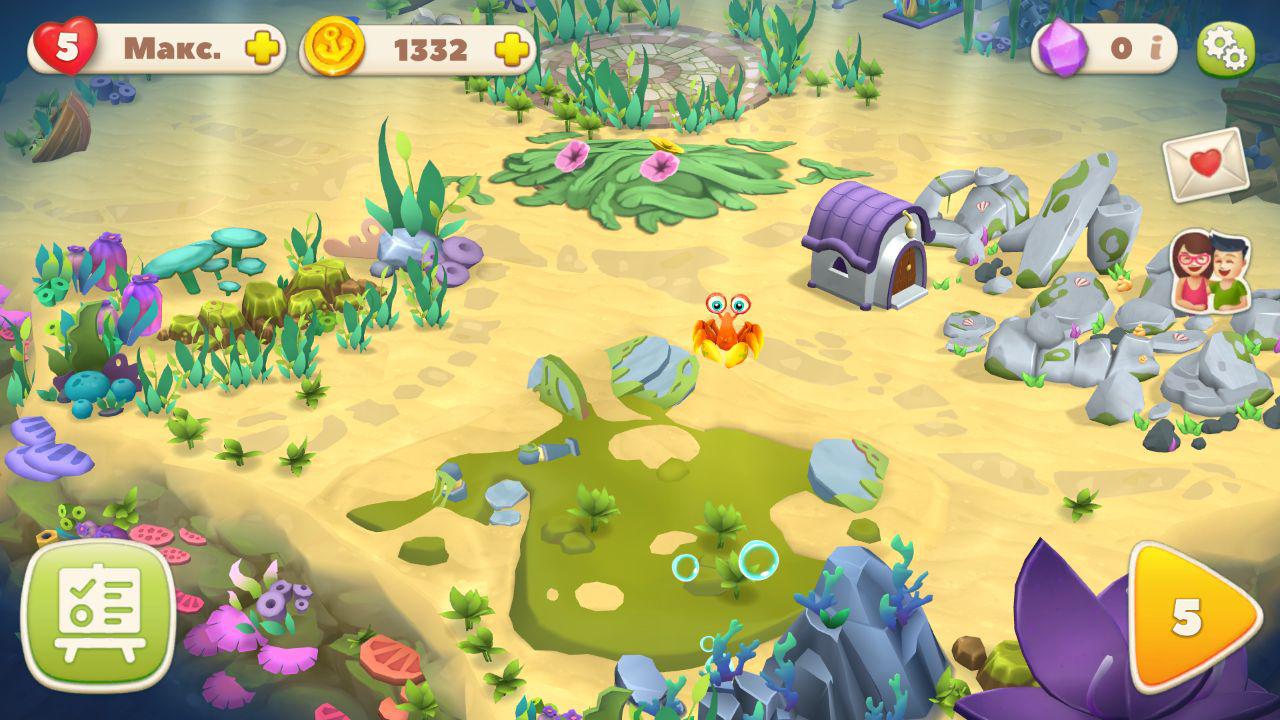Plarium expands its portfolio of projects, inspired by the mechanics of Playrix and Kefir Studio
Over the past year, Plarium has released (including in sotflonch) six projects. Five of them are largely based on popular box office hits. The list of sources of inspiration includes titles from companies such as Playrix, Kefir and Peak Games. This approach allowed the company to seriously increase its earnings.
Israeli Plarium has become famous for mobile strategies. Since the launch, she has been doing hardcore projects by the standards of a mass audience, in which the management of a castle or a futuristic base is in the first place.
This was the case when the company was focused on the social market, and when the company took up mobile, where its main blockbusters for a long time were strategic Total Domination and Stormfall: Rise of Balur. In 2015, Plarium released the Vikings: War of Clans strategy on iOS and Android, its main project by financial indicators.

Vikings: War of Clans
Since then, Plarium has not had box office hits for a long time, despite regular releases.
The situation was changed by the appearance in May last year of the storyline three-in-a-row Family Zoo: The Story. It copies the gameplay and mechanics of Gardenscapes (in particular, the meta is borrowed, tied to the fact that passing levels gives currency for completing story tasks), one of the most earning casual games in the world.
Before the launch of Family Zoo, the Israelis had already experimented with match mechanics. They acted as publishers of Fruit Land on the Amazone Appstore, made the Heroes of Battle Cards battler and, with the support of Twentieth Century Fox, released Rio: Match 3 Party. However, none of these games achieved success comparable to their strategic product line.

Family Zoo
Now the situation is radically different.
A bright fairy tale about the rescue of a family zoo is included in the top 5 most commercially successful titles of Plarium. The project is far from the results of the Viking game, which can be regularly seen in the shows of the most popular Russian video bloggers, but Family Zoo is on the way to overtake Throne: Kingdom at War, one of the oldest and main projects of the company, in financial terms.
The successful borrowing of the formula tested and tested by colleagues from Playrix may have forced Plarium to reconsider its product strategy. Of the projects launched after Family Zoo, most of them somehow appeal to the casual box office hits of other companies.
Sun City: Green Story is no longer based on Gardenscapes, but on Homescapes. Only in the game the user is not engaged in repairing the house, but helps to rebuild a pretty girl-mayor of the city.

Sun City: Green Story
The source of inspiration for Undersea Match & Build is Fishdom.
Here, the player also arranges the life of marine inhabitants under water. However, both meta and three-in-a-row mechanics are different in Undersea, which is closer to Homescapes (the key difference between three-in—a-row Homescapes mechanics from Gardenscapes is that non-standard combinations give different bonuses in behavior, as in Candy Crush Soda Saga).

Undersea Match & Build
Lost Island: Blast Adventure from the casual novelties of Plarium looks the most interesting.
In the project, the mechanics of the Turkish Toon Blast were taken as the main gameplay (the elements are removed not by swipe, but by tap), but they left the body kit from the three-in-a-row Playrix.

Lost Island: Blast Adventure
The fifth novelty of Plarium was Stormfall: Saga of Survival.
In this series, the project is an exception. It is not aimed at a casual audience, but at hardcore players. This is an isometric survival. However, he clearly borrows mechanics and gameplay. Here the prototype was the game Last Day on Earth: Survival by Kefir.

Stormfall: Saga of Survival
There is nothing surprising in the adoption of successful foreign mechanics on the mobile market, as there is nothing shameful when a company not only clones, but also tries to rethink some moments, to change.
However, another thing is curious here — with what pressure Plarium rushed for production “according to other people’s patterns”.
The company did not just present one project that looks like someone’s box office hit. She has implemented as many as four games that clearly use the principles of one of the central box office hits on the market. As for the fifth project, within its framework, the company seems to have scaled a successful technique (we borrow and put it on the market) for a game of another genre and another niche.
Judging by the dynamics of the company’s earnings, the chosen path for Plairum is justifying itself so far. In May last year, the company’s revenue amounted to $ 6.6 million, and in May this year — $ 8.5 million.

Plarium sales dynamics (May 2017 — May 2018, DataMagic)Another question is whether the new course is a decision of internal management or interference in the internal affairs of its new owner — the entertainment giant Aristocrat, which also owns Big Fish Games today.
In an interview with PocketGamer, Plarium producer Dmitry Karger claims that the solution is internal. It’s just that the studio saw an opportunity for itself to do something new. Whether it is worth waiting for another five projects built within the framework of such a reception over the next year will most likely depend on the results of the games described.